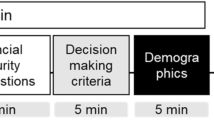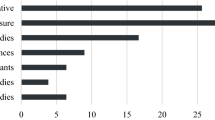Abstract
Islamic Banks (IBs) are considered as having ethical identity, since the foundation of their business philosophy is closely tied to religion. In this article, we explore whether any discrepancy exists between the communicated (based on information disclosed in the annual reports) and ideal (disclosure of information deemed vital based on the Islamic ethical business framework) ethical identities and we measure this by what we have termed the Ethical Identity Index (EII). Our longitudinal survey results over a 3-year period indicate the overall mean EII of only one IB out of seven surveyed to be above average. The remaining six IBs suffer from disparity between the communicated and ideal ethical identities. We further found the largest incongruence to be related to four dimensions: commitments to society; disclosure of corporate vision and mission; contribution to and management of zakah, charity and benevolent loans; and information regarding top management. The results have important implications for communication management if IBs are to enhance their image and reputation in society as well as to remain competitive.
Similar content being viewed by others
Abbreviations
- AAOIFI:
-
The Accounting and Auditing Organisation for Islamic Financial Institutions
- ABB:
-
Al-Baraka Bank
- ADIB:
-
Abu Dhabi Islamic Bank
- ARB:
-
Al-Rajhi Bank
- BIB:
-
Bahrain Islamic Bank
- DIB:
-
Dubai Islamic Bank
- EII :
-
Ethical Identity Index
- IB(s):
-
Islamic bank(s)
- KFH:
-
Kuwait Finance House
- SIB:
-
Shamil Islamic Bank
- SSB:
-
Shari’ah Supervisory Board
References
AAOIFI: 2001, Accounting, Auditing and Governance Standards for Islamic Financial Institutions (Accounting and Auditing Organisation for Islamic Financial Institutions, Bahrain).
Adams C. A., Harte G. (1998) The Changing Portrayal of the Employment of Women in British Banks’ and Retail Companies’ Corporate Annual Reports. Accounting, Organizations and Society 23(80):781–812
Aggarwal, R. K., Yousef, T. (2000) Islamic Banks and Investment Financing. Journal of Money, Credit, and Banking 32(1):93–120
Ahmed, K., Nichols, D. (1994) The Impact of Non-financial Company Characteristics on Mandatory Disclosure Compliance in Developing Countries: The Case of Bangladesh. International Journal of Accounting 29 (1):62–77
Allessandri, S. W. (2001) Modelling Corporate Identity: A Concept Explication and Theoretical Explanation. Corporate Communications: An International Journal 6(4):173–182
Balmer, J. M. T. and S. Stotvig: 1997, ‚Corporate Identity and Private Banking: A Review and Case Study’. International Journal of Banking, special edition on Corporate identity in financial services 15(5), 169–184.
Balmer, J. M. T., Soenen, G. B. (1999) The ACID Test of Corporate Identity Management. Journal of Marketing Management 15(1–3):69–92
Balmer, J. M. T., Greyser, S. A. (eds) (2003) Revealing the Corporation: Perspectives on Identity Image, Reputation, Corporate Branding and Corporate-Level Marketing. Routledge, London
Balmer, J. M. T. (1998) Corporate Identity and the Advent of Corporate Marketing. Journal of Marketing Management 14:963–996
Balmer, J. M. T. (2001) Corporate Identity, Corporate Branding and Corporate Marketing: Seeing Through the Fog. European Journal of Marketing 35(3/4):248–291
Beattie, V., Jones, M. (1992) The Use and Abuse of Graphs in Annual Reports: Theoretical Framework and Empirical Study. Accounting and Business Research 22(88):291–303
Beattie, V., Jones, M. (1994) An Empirical Study of Graphical Format Choices in Charity Annual Reports. Financial Accountability and Management 10(3):215–236
Bernstein, D.: 2003, `Executive Perspective: 2 Corporate Branding-Back to Basics,' European Journal of Marketing, 37(7/8), 1133–1141
Bernstein, D. (1984) Company Image and Reality: A Critique of Corporate Communications. Holt, Rinehart & Winston Ltd., East Sussex
Berrone, P., J. Surroca and J. A. Tribo: 2005, ‚Corporate Ethical Identity as Determinant of Form Performance: A Test of the Mediating Role of Stakeholder Satisfaction’, http://www.docubib.uc3m.es/Workingpapers/WB/wb053108.pdf.
Birkigt, K., Stadler, M. (1986) Corporate Identity, Grundiagen, Funktionen und Beispoelen. Verlag, Moderne Industrie (Landsberg am Lech)
Bukhari: 2005, Sahih Al-Bukhari, http://www.sahihalbukhari.com/, accessed in May and August 2005.
Cooke, T. E. (1989) Disclosure in the Corporate Reports of Swedish Companies. Accounting and Business Research 19(74):113–124
Cooke, T. E. (1996) The Influence of the Keiretsu on Japanese Corporate Disclosure. Journal of International Financial Management and Accounting 7(3):191–215
Cornellisson, J. P., Elving W.J.L. (2003) Managing Corporate Identity: An Integrative Framework of Dimensions and Determinants. Corporate Communications: An International Journal 8(2):114–120
Cowen, S. S., Ferreri, L. B., Parker L. D. (1987) The Impact of Corporate Characteristics on Social Responsibility Disclosure: A Typology and Frequency-based Analysis. Accounting, Organizations and Society 12(2):111–122
de Chernatony, L., Segal-Horn, S. (2001) The Criteria for Successful Services Brands. European Journal of Marketing 37(7/8):1095–1118
Deegan, C., Rankin, M. (1997) The Materiality of Environmental Information to Users of Annual Reports.Accounting, Auditing and Accountability Journal 10(4):562–583
Dien, M. Y. I. (1992) Islamic Ethics and the Environment. In: Khalid F., O’Brien J. (eds) Islam and Ecology. Cassell, U.K. 25–35
Dowling, G. (2001) Creating Corporate Reputations: Identity, Image, and Performance. Oxford University Press Inc., New York
El-Ashker, A. (1987) The Islamic Business Enterprise. Croom Helm, U.K.
Ernst and Ernst: 1978, Social Responsibility Disclosure 1978 Survey, Cleveland, OH, U.S.A.
Fukukawa, K., Moon, J. (2004) A Japanese Model of Corporate Social Responsibility? A Study of Website Reporting. Journal of Corporate Citizenship 16:45–69
Gambling, T., Jones, R., Karim, R. A. (1993) Creditable Organizations: Self Regulation v. External Standard Setting in Islamic Banks and British Charities. Financial Accountability and Management 9(3):195–207
Gray, E., Balmer, J. M. T. (1998) Managing Image and Corporate Reputation. Long Range Planning 31(5):685–692
Gray, E. and J. M. T. Balmer: 2001, ‚Ethical Identity: What Is It? What of It?’, Working Paper No. 01/15, April (Bradford University School of Management).
Gray, R., Kouhy, R., Lavers, S. (1995) Corporate social and environmental reporting: a review of the literature and a longitudinal study of U.K. disclosure. Accounting, Auditing and Accountability Journal 8(2):47–77
Gray, S. J., Owen, D., Adams, C. (1996) Accounting and Accountability: Changes and Challenges in Corporate Social and Environmental Reporting. Prentice-Hall, U.K.
Guthrie, J. E., Parker, L. D. (1989) Corporate Social Reporting: A Rebuttal of Legitimacy Theory. Accounting and Business Research 19(76):343–352
Guthrie, J. E., Parker, L. D. (1990) Corporate Social Disclosure Practice: A Comparative International Analysis. Advances in Public Interest Accounting 3(2):159–176
Haniffa, R. M., Hudaib, M. A. (2002) A Theoretical Framework for the Development of the Islamic Perspective of Accounting. Accounting, Commerce and Finance: The Islamic Perspective Journal 6(1/2):1–71
Haniffa, R. M., Cooke, T. E. (2002) Culture, Corporate Governance and Disclosure in Malaysian Corporations. Abacus 38(3):317–349
Haniffa, R. M.(2002) Social Responsibility Disclosure: An Islamic Perspective. Indonesian Management and Accounting Journal 1(2):128–146
Hawn, R.: 1998, ‚Image vs Identity’, Trends 14, April/May, 22–27.
Holsti, O. (1969) Content Analysis for the Social Sciences and Humanities. Reading, MA, Addison-Wesley
IBF NET: 2005, http://www.Islamic-finance.net/bank.html (Islamic Business and Finance), accessed in May and August 2005.
International Herald Tribune: 2003, IHT Sponsored Sections, March 03, http://www.islamicfinance.de/banks.html, accessed in May and August 2005.
Johansson, J. K., Hirano, M. (1999) Brand Reality: The Japanese Perspective. Journal of Marketing Management 15(1–3):93–105
Karim, R. A. (1990) Standard Setting For the Financial Reporting of Religious Business Organisations: The Case of Islamic Banks. Accounting and Business Research 20(80):299–305
Krippendorff, K. (1980) Content Analysis: An Introduction to its Methodology. Sage, Beverly Hills, CA
Melewar, T. C., Jenkins, E. (2002) Defining the Corporate Identity Construct. Corporate Reputation Review 5(1):76–90
Mitchell, A. (1999) Out of the Shadows. Journal of Marketing Management 15(1–3):25–42
Mudawi, A. Y.: 1984, ‚Islamic Banks’ Problems and Prospect’, Paper Presented at the International Seminar on Islamic Banking, Islamabad.
Neimark, M. D. (1992) The Hidden Dimensions of Annual Reports. Paul Chapman, London
Portugal, J., Halloran, K. (1986) Avoiding a Corporate Identity Crisis. Management Review 75(4):43–45
Preston, A., Wright, C., Young, J. (1996) Imag(in)ing Annual Reports. Accounting, Organizations and Society 21(1):113–137
Siddiqi, A. H.: 1980, The Translation of the Meaning of Sahih Muslim (Muhammad Ashraf, Lahore)
Siddiqi, M. N. (1995) Islamic Economics and Finance. In: Ali M.(eds) Encyclopaedia of Islamic Banking and Insurance. Institute of Islamic Banking and Finance, London 1–9
Sternberg, E.: 2000, Just Business: Business Ethics in Action (Oxford University Press).
The Holy Qur’an: 1989, The Holy Qur’an: Text, Translation and Commentary, Y. Ali (tr), New Revised Edition (Amana Corporation, Brentwood, Maryland, U.S.A.).
The Oxford Illustrated Dictionary: 1984, J. Coulson et al. (eds.), 2nd ed. (Oxford, University Press, London).
Topalian, A. (2003) Experienced Reality: The Development of Corporate Identity in the Digital Era. European Journal of Marketing 37(7/8):1119–1132
Useem, J.: 2005, ‚Banking On Allah: Devout Muslims Don’t Pay or Receive Interest. So How Can Their Financial System Work?’, http://www.truthandgrace.com/muslimfinance.htm, accessed in August 2005.
van Rekom, J.: 1997, ‚Deriving an Operational Measure of␣Corporate Identity’. European Journal of Marketing, special edition on Corporate identity 31(5/6), 410– 422
van Riel, C. B. M. and J. M. T. Balmer: 1997, ‚Corporate Identity: The Concept, Its Measurement and Management’. European Journal of Marketing, special edition on Corporate identity 31(5/6), 340–355
Weber, R. P. (1985) Basic Content Analysis. Beverly Hills, CA: Sage
Weber, R. P.: 1988, ‚Basic Content Analysis.Sage University Paper Series on Quantitative Applications’, in The Social Sciences, Series No. 07–049 (Sage, Beverly Hills, CA London).
Wiseman, J.: 1982, ‚An Evaluation of Environmental Disclosures Made in Corporate Annual Reports’. Accounting, Organizations and Society 7(1), 53–63.
Author information
Authors and Affiliations
Corresponding author
Additional information
Roszaini Haniffa is a Senior Lecturer and Head of Accounting and Finance at the Bradford University School of Management. She holds a PhD from Exeter University and has published papers in Abacus, Journal of Accounting and Public Policy, Journal of Business Finance and Accounting and other journals. Her research interests focus on social responsibility reporting, corporate governance, international accounting and the Islamic perspective of accounting. Ros has reviewed papers and is a member on the editorial board of several journals.
Mohammad Hudaib is a Lecturer in Accounting at the Bradford University School of Management and holds a PhD from Essex University. He has previously taught at Exeter University and prior to his teaching career, was an auditor in Saudi Arabia. He has published papers on auditing and corporate governance in Journal of Business Finance and Accounting. His current research interests include auditing, Islamic perspective of accounting, accounting theory and ethics.
Rights and permissions
About this article
Cite this article
Haniffa, R., Hudaib, M. Exploring the Ethical Identity of Islamic Banks via Communication in Annual Reports. J Bus Ethics 76, 97–116 (2007). https://doi.org/10.1007/s10551-006-9272-5
Published:
Issue Date:
DOI: https://doi.org/10.1007/s10551-006-9272-5




